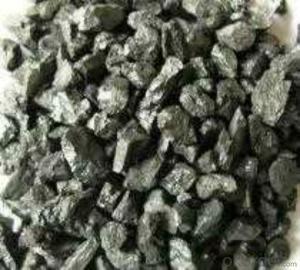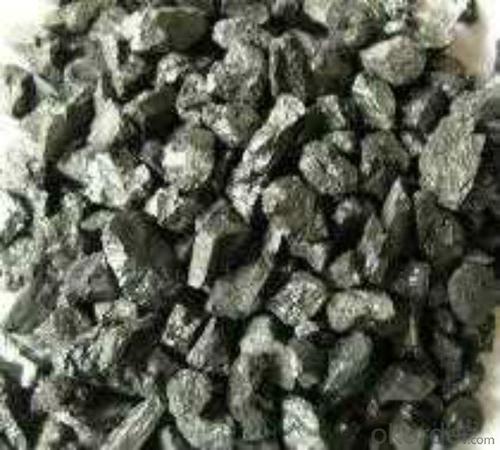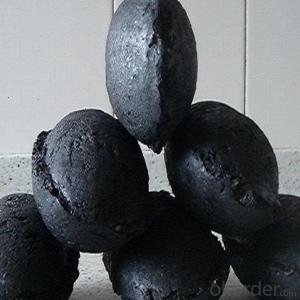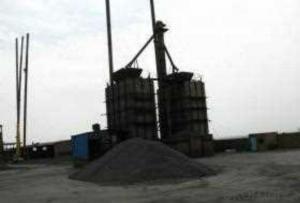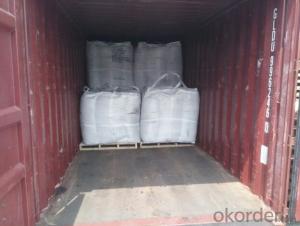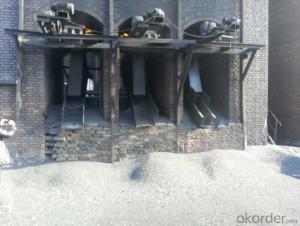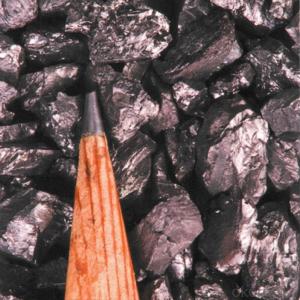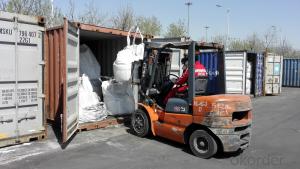FC93 Calcined Anthracite Coal in Low Sulphur as charging coke
- Loading Port:
- Tianjin
- Payment Terms:
- TT or LC
- Min Order Qty:
- 20 m.t.
- Supply Capability:
- 9500 m.t./month
OKorder Service Pledge
OKorder Financial Service
You Might Also Like
Specification
Introduction
Carbon Additive/Calcined Anthracite Coal may substitute massively refinery coke or graphite. Meanwhile its cost is much less than the refinery coke and graphite. Carbon Additive is mainly used in electric steel ovens, water filtering, rust removal in shipbuilding and production of carbon material.
Features
Carbon Additive also called Calcined anthracite Coal, Gas Calcined Anthracite Coal, Carbon Raiser, Recarburizer, injection coke, charging coke and etc.
The main raw material of our Carbon Additive is Ningxia unique high quality Taixi anthracite, with characteristic of low ash and low sulfur. Carbon additive has two main usage, fuel and additive. When being used as the carbon additive of steel-smelting, and casting, the fixed carbon may achieve above 95%. it is playing more and more important role in the industry.
Best quality Taixi anthracite as raw materials through high temperature calcined at 1200-1250 ℃ for 24 hours by the DC electric calciner with results in eliminating the moisture and volatile matter from Anthracite efficiently, improving the density and the electric conductivity and strengthening the mechanical strength and anti-oxidation, It has good characteristics with low ash, low resistivity, low carbon and high density. It is the best material for high quality carbon products, it is used as carbon additive in steel industry or fuel.It is becoming more and more popular in the steel industry. We have built a long-term relationship with major steel plants in the world
Specifications
PARAMETER UNIT GUARANTEE VALUE | |||||
F.C.% | 95MIN | 94MIN | 93MIN | 92MIN | 90MIN |
ASH % | 4MAX | 5MAX | 6MAX | 7MAX | 8MAX |
V.M.% | 1 MAX | 1MAX | 1.5MAX | 1.5MAX | 1.5MAX |
SULFUR % | 0.5MAX | 0.5MAX | 0.5MAX | 0.5MAX | 0.5MAX |
MOISTURE % | 0.5MAX | 0.5MAX | 0.5MAX | 0.5MAX | 0.5MAX |
Pictures
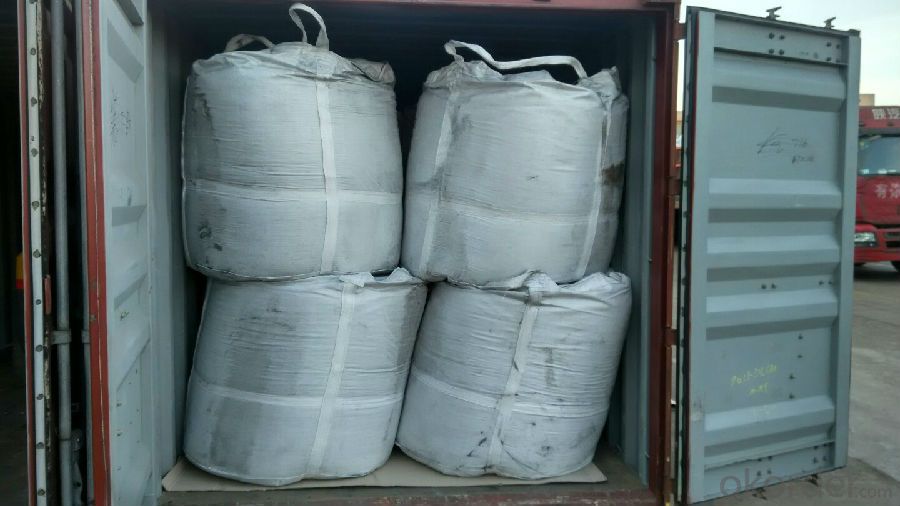
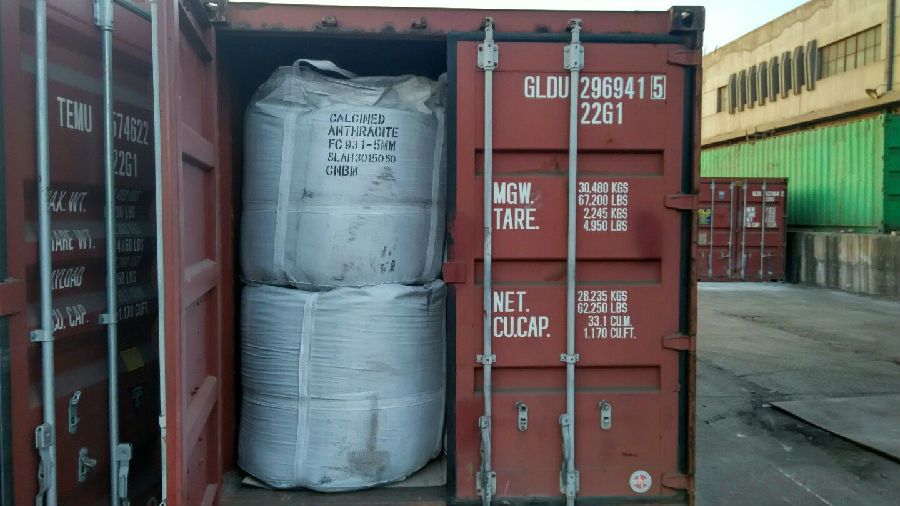
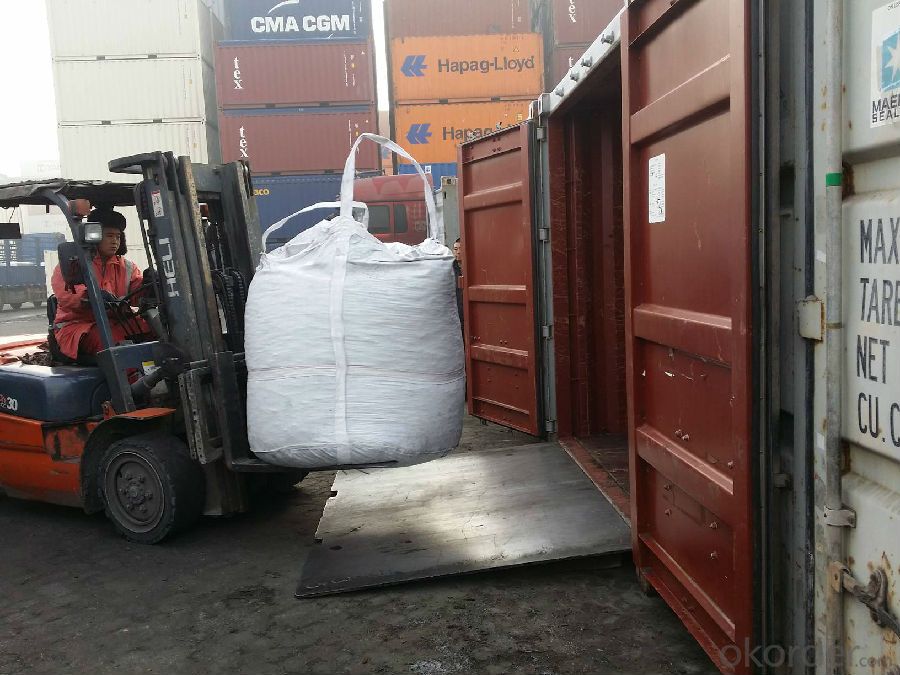
FAQ:
What is the packing?
In 25kg bag/ In jumbo bags without pallet/ Two jumbo bags with one pallet/ or as customers’ request
2. What is the production capacity?
10 thousand tons per month
3 What is payment term?
Irrevocable LC at sight/ 20% down payment by T/T and 80% against BL copy byT/T/ or to be discussed
4 What is the service?
We will send sample to the third party(CIQ, CCIC, SGS,BV or to be discussed) for checking, and present the test certificate and loading repot of shipment.
- Q:How does carbon affect the pH of rainwater?
- Carbon dioxide (CO2) in the atmosphere can dissolve in rainwater to form carbonic acid (H2CO3), which lowers the pH of rainwater, making it more acidic.
- Q:How does carbon dioxide affect waste management processes?
- Carbon dioxide can affect waste management processes by contributing to the greenhouse effect and climate change. Increased levels of carbon dioxide in the atmosphere can lead to higher temperatures, which can impact waste decomposition rates, emission of greenhouse gases from landfills, and the overall efficiency of waste treatment technologies. Additionally, carbon dioxide emissions from waste incineration can contribute to the overall carbon footprint of waste management processes.
- Q:How does carbon affect water quality?
- Carbon can affect water quality by altering its pH level and reducing its oxygen content. Additionally, carbon can react with other chemicals present in water to form harmful compounds, compromising its overall quality and making it unsuitable for consumption and aquatic life.
- Q:Made of high strength structural partsThe market quality of the carbon fiber plate is too much, the price is low, do not know how to choose. A knowledgeable friend can introduce larger enterprises? The quality of the carbon fiber board produced must be better and the performance should be stable!
- You are not for the prestressing bar, if you find the building reinforcement for Tianjin Beijing card, if you do the structure reinforcement for Jiangsu and Wuxi via the new material industry, these are relatively well-known.
- Q:How is carbon used in the production of pharmaceuticals?
- Carbon is used in various ways in the production of pharmaceuticals. One primary use of carbon is in the synthesis of organic compounds, which form the basis of many drugs. Carbon atoms are the building blocks of organic compounds, and they are essential for creating the complex structures found in pharmaceutical molecules. Carbon is also used in the production of active pharmaceutical ingredients (APIs). APIs are the components of a drug that provide the desired therapeutic effect. Carbon is often incorporated into the structure of APIs to enhance their stability, bioavailability, and efficacy. Carbon-based molecules can be modified to fine-tune their properties, making them more effective in targeting specific diseases or conditions. Moreover, carbon is utilized in the purification and separation processes during pharmaceutical production. Carbon-based adsorbents, such as activated carbon, are commonly used to remove impurities and contaminants from drug formulations. These adsorbents have a high surface area and can effectively bind to and remove unwanted substances, ensuring the purity and safety of pharmaceutical products. Carbon is also employed in the development of drug delivery systems. Carbon nanomaterials, such as carbon nanotubes and graphene, have unique properties that make them suitable for drug delivery applications. These nanomaterials can encapsulate drugs, allowing for controlled release and targeted delivery to specific tissues or cells. They can also improve the solubility and stability of drugs, enhancing their therapeutic potential. In summary, carbon plays a crucial role in the production of pharmaceuticals. It is involved in the synthesis of organic compounds, the creation of active pharmaceutical ingredients, the purification of drugs, and the development of drug delivery systems. Its versatility and ability to form complex structures make carbon an essential element in the pharmaceutical industry.
- Q:Organic matter is converted from organic carbon. Why is humus represented by carbon instead of converted?
- However, humus is an important part of soil organic matter, is formed by the decomposition of organic matter in the soil, is a black amorphous organic colloid. Humus is organic polymer compound with colloidal acid, high content of nitrogen. The humus must be organic carbon content, and with the soil humus carbon content was positively correlated.Humus is a kind of soil organic matter, while soil organic matter also contains fresh organic matter and partially decomposed organic matter
- Q:How is carbon used in the manufacturing of electronics?
- Carbon is used in the manufacturing of electronics in various ways. One common application is in the form of carbon nanotubes, which are used to make smaller and more efficient transistors. Carbon is also used as a component in lithium-ion batteries, providing high energy density and longer-lasting power. Additionally, carbon is used as a conductive material in circuit boards and as a protective coating to prevent static electricity buildup.
- Q:What are the different types of carbon-based alloys?
- There are several different types of carbon-based alloys, each with unique properties and applications. Some of the most common types include: 1. High carbon steel: This type of alloy contains a high percentage of carbon, typically between 0.6% and 1.5%. It is known for its strength and hardness, making it suitable for applications such as tools, knives, and automotive parts. 2. Low carbon steel: Also known as mild steel, this alloy has a lower carbon content, usually below 0.3%. It is more malleable and ductile than high carbon steel, making it suitable for applications that require forming and welding, such as construction and automotive components. 3. Stainless steel: A popular alloy that contains chromium, nickel, and other elements, stainless steel is highly resistant to corrosion and staining. It is commonly used in kitchen utensils, medical equipment, and construction. 4. Cast iron: This alloy contains a higher carbon content, typically between 2% and 4%. It is known for its excellent heat retention and is commonly used in cookware, pipes, and engine blocks. 5. Tool steel: Designed for making cutting tools, this alloy has a high carbon content, typically between 0.7% and 1.4%. It offers excellent hardness, wear resistance, and heat resistance. 6. Carbon fiber reinforced polymers (CFRP): These alloys consist of carbon fibers embedded in a polymer matrix. They are lightweight, strong, and have high stiffness, making them ideal for applications such as aerospace, sports equipment, and automotive parts. Overall, carbon-based alloys offer a wide range of properties and applications, making them versatile materials in various industries.
- Q:What are the impacts of carbon emissions on natural disasters?
- Carbon emissions have a significant impact on natural disasters, exacerbating their intensity and frequency. One of the most prominent effects of carbon emissions is the contribution to global warming and climate change. As carbon dioxide and other greenhouse gases accumulate in the atmosphere, they trap heat and cause the Earth's temperature to rise. This rising temperature leads to various changes in weather patterns, which in turn increase the likelihood and severity of natural disasters. One of the most obvious impacts of carbon emissions on natural disasters is the intensification of hurricanes and tropical storms. Warmer ocean temperatures provide more energy for these storms, making them stronger and more destructive. Additionally, increased evaporation due to higher temperatures leads to heavier rainfall during storms, increasing the risk of flooding and landslides. Carbon emissions also contribute to the melting of glaciers and polar ice caps, leading to rising sea levels. This rise in sea levels increases the vulnerability of coastal areas to storm surges and flooding during hurricanes and typhoons. Low-lying regions and island nations are particularly at risk, as they face the possibility of losing their land to rising waters. Furthermore, carbon emissions play a role in the occurrence and severity of wildfires. As temperatures rise, vegetation becomes drier, creating ideal conditions for wildfires to ignite and spread quickly. These wildfires can devastate vast areas of land, destroying ecosystems, homes, and livelihoods. Another impact of carbon emissions on natural disasters is the disruption of weather patterns. Climate change is altering rainfall patterns, leading to longer and more severe droughts in some regions, while others experience more frequent and intense rainfall events. These changes in precipitation patterns can result in prolonged droughts, water scarcity, and increased risk of wildfires in some areas, while others face increased flooding and landslides. In conclusion, carbon emissions have a profound impact on natural disasters. They contribute to global warming and climate change, intensifying hurricanes, increasing the risk of flooding, raising sea levels, fueling wildfires, and disrupting weather patterns. It is crucial to reduce carbon emissions and transition to clean and sustainable energy sources to mitigate these impacts and protect our planet from the devastating effects of natural disasters.
- Q:How is carbon used in the production of construction materials?
- Carbon is used in the production of construction materials in several ways. One of the most common applications is in the production of steel, which is a vital material in the construction industry. Carbon is a key component in the iron and steel-making process, as it is combined with iron to create a stronger and more durable material. The addition of carbon to iron forms a compound known as steel, which has excellent structural properties and can be used to construct various components of buildings, such as beams, columns, and reinforcement bars. Additionally, carbon fibers are increasingly being used in the production of construction materials. Carbon fibers are lightweight, yet incredibly strong and stiff, making them ideal for reinforcing concrete and other materials. When carbon fibers are added to concrete, they enhance its strength and durability by reducing cracking and improving its resistance to impact and corrosion. This allows for the construction of structures that are more resilient and longer-lasting. Furthermore, carbon is used in the production of composite materials, which are becoming popular in construction. Carbon composites are made by combining carbon fibers with a polymer matrix, resulting in a material that is lightweight, yet strong and rigid. These composites are used in various construction applications, such as building panels, roofing, and bridges, as they offer high strength-to-weight ratios and excellent resistance to environmental factors. In summary, carbon plays a crucial role in the production of construction materials. It is used in the creation of steel, which is a fundamental component of buildings, and its fibers are employed to reinforce concrete and other materials. Additionally, carbon composites provide lightweight and high-strength solutions for construction applications. By harnessing the properties of carbon, construction materials can be made stronger, more durable, and more sustainable.
1. Manufacturer Overview |
|
|---|---|
| Location | |
| Year Established | |
| Annual Output Value | |
| Main Markets | |
| Company Certifications | |
2. Manufacturer Certificates |
|
|---|---|
| a) Certification Name | |
| Range | |
| Reference | |
| Validity Period | |
3. Manufacturer Capability |
|
|---|---|
| a)Trade Capacity | |
| Nearest Port | |
| Export Percentage | |
| No.of Employees in Trade Department | |
| Language Spoken: | |
| b)Factory Information | |
| Factory Size: | |
| No. of Production Lines | |
| Contract Manufacturing | |
| Product Price Range | |
Send your message to us
FC93 Calcined Anthracite Coal in Low Sulphur as charging coke
- Loading Port:
- Tianjin
- Payment Terms:
- TT or LC
- Min Order Qty:
- 20 m.t.
- Supply Capability:
- 9500 m.t./month
OKorder Service Pledge
OKorder Financial Service
Similar products
Hot products
Hot Searches
